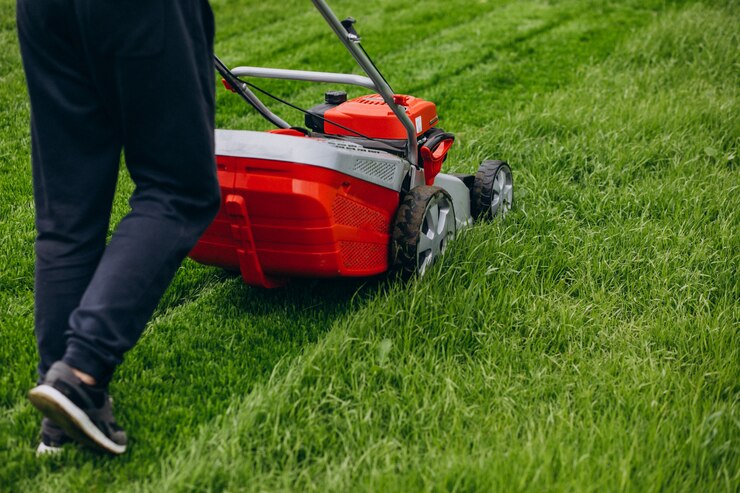As summer fades and the air turns crisp, our lawns often reflect the changing season. Lush green fades to a more muted palette, and growth slows. But don’t be fooled! Fall is actually the prime time to take action and set your lawn up for success in the spring. By implementing some key strategies now, you can ensure a vibrant, healthy green carpet come next year.
Understanding Fall’s Role in Lawn Health
Fall offers cooler temperatures, often accompanied by gentle rains, creating the perfect environment for root growth. This is crucial because strong roots are the foundation of a healthy lawn. Healthy roots absorb water and nutrients more effectively, allowing your grass to better withstand summer heat and drought. Additionally, fall provides a window of opportunity for reseeding and repair before harsh winter conditions arrive.
Essential Steps for a Greener Fall Lawn
Here are some key steps you can take to transform your fall lawn from tired to thriving:
- Let There Be Light: Trees that have grown larger over the summer might be casting excessive shade on your lawn. To address this, consider limbing up these trees. This involves removing the lower branches, allowing more sunlight to reach the grass underneath. Be mindful; for larger trees, consult a certified arborist to ensure proper pruning techniques are used.
- Dethatching for Better Breathing: Thatch is a layer of dead grass stems, stolons (above-ground stems), and rhizomes (underground stems) that accumulates between the living grass and the soil. A thick thatch layer prevents water, air, and nutrients from reaching the roots. Dethatching involves removing this layer using a dethatching rake or a vertical mower. This process invigorates the lawn and promotes healthy growth.
- Aerate for Deeper Roots: Compacted soil restricts air and water movement, hindering root development. Aeration involves creating small holes in the soil, allowing for better penetration of these essential elements. You can achieve aeration using a core aerator, which removes plugs of soil, or a spike aerator, which simply pokes holes in the ground. Aeration is most effective when the soil is moist but not soggy.
- Seeding and Repair: Fall is the perfect time to address bare patches or thin areas in your lawn. Choose a grass seed variety suitable for your climate and sun exposure. Before seeding, loosen the soil with a rake and sprinkle the seeds evenly. Lightly rake again to ensure good seed-to-soil contact. Keep the seeded area moist until the grass germinates.
- Topdressing for Extra TLC: Topdressing involves applying a thin layer of high-quality compost or topsoil over the lawn. This practice adds essential nutrients to the soil, improves drainage, and helps smooth out uneven surfaces. Spread the topdressing material in a thin layer (around ¼ inch) and rake it evenly to distribute it amongst the grass blades.
- Fall Fertilization: Fertilizing in the fall strengthens your lawn’s root system and prepares it for winter dormancy. Opt for a slow-release fertilizer formulated specifically for fall application. This ensures a steady supply of nutrients throughout the cooler months, promoting root growth without stimulating excessive top growth that could be susceptible to winter damage.
- Watering Wisely: While rainfall becomes more frequent in fall, it’s still important to monitor your lawn’s moisture needs. Deep watering, allowing water to penetrate several inches into the soil, is more beneficial than frequent shallow watering. Aim to water your lawn early in the morning to minimize evaporation.
- Leave the Leaves (Partially): Fallen leaves can be a valuable resource for your lawn. Shred fallen leaves with your lawn mower and leave them on the grass in a thin layer (no more than ½ inch deep). This organic matter decomposes over time, adding valuable nutrients to the soil and promoting healthy microbial activity. However, avoid letting leaves pile up thickly, as this can smother the grass underneath.
Taking Care of Your Fall Lawn Care Tools
Fall is also a great time to clean and store your lawn care tools for the winter. Sharpen mower blades, clean and oil your tools, and store them in a dry, protected location. This routine maintenance ensures your tools are in top shape and ready to tackle spring lawn projects.
Beyond the Basics: Eco-Friendly Lawn Care
While a healthy green lawn is aesthetically pleasing, it’s also important to consider environmentally friendly practices. Here are a few tips for an eco-friendly fall lawn care routine:
- Consider organic fertilizers: Opt for organic fertilizers made from natural ingredients like composted manure or bone meal. These nourish your lawn without introducing harmful chemicals into the environment.
- Attract beneficial insects: Encourage a healthy ecosystem in your lawn by planting native flowers and avoiding harsh pesticides. Beneficial insects like ladybugs and earthworms can help control pest populations naturally.

